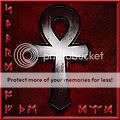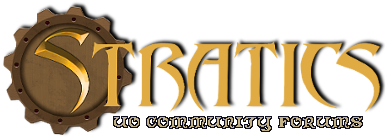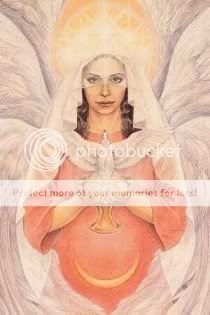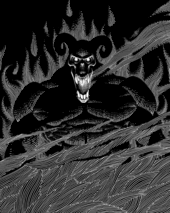Ethics
Order (Stoicism)
“Virtue is sufficient for happiness.”
Order is the principle in which Law, and Virtue, are the guiding principles that lead man into a state of bliss and utopia.
The philosophers of Order, called Stoics, were a group concerned with the interaction between cosmic Fate, the domain of God, and human freedom. It was their view that man has a Will, and that it, in it's most innate form, is good and is in accordance with nature. It is only through ignorance that man is led into misfortune and sin.
The principle, popular amongst scholars and rhetoricians of the ancient empires, was embraced in Britannia as the guiding principle upon which it is based. It was the belief of Cantabrigian, Lord of Britannia, that an ordered government and an ordered people, reliant on Logic and Virtue, would be able to create a utopia of their own.
Order teaches that reason and fortitude are sufficient for overcoming destructive emotions, the source of all misfortune. It is from this that we derive the idea of Stoic calm. The clear and unbiased philosopher, it is said, free of anger and jealousies, is able to understand the true nature of the Universe. Order, as a school of thought, is also conflated with notions of the Leviathan and the Social Contract, the idea that man relinquishes absolute freedom in exchange for protection and justice.
While order is a non-theistic, it's character does not exclude supernatural or religious views.
Order is based on Stoicism, Platonism and the philosophies of Thomas Hobbs.
Chaos (Epicurianism)
“Do what thou wilt, that is the whole of the law.”
The most fundamental principle governing Chaos is that there is no Law.
There is no divine order, no morals, and that all rules and auspices are the invention of man: a fickle and avaricious creature who seeks to enslave himself and those around him.
Blackthorne, and those who followed him, sought to create a canon of their own: a rejection of the superstition and perceived injustices of previous generations. In his view, there is no God. There are no morals. There is no soul, and there is no consequence for sin.
Man should sin, Chaos dictates, for through rejection of morals can man expunge his base urges and become a more enlightened being.
Yet Blackthorne did not perceive his utopia as one of barbarism, and evil. It was his assumption, and the assumption of his followers, that without laws, governments or superstitions, the evils of this world would cease to be. He was a great patron of the arts and sciences, and believed these higher leanings would continue to be the highest principles of his utopia.
Chaos is based on Thelema, Epicurianism and the philosophies of Friederich Nietzche.
Balance (Daoism)
“To understand ones opposite, is to achieve balance. To maintain balance, is to achieve harmony.”
Balance is the principle in which there is a dualistic, cosmic order of opposites in the universe, and that to be, one's opposite must also exist: Good and Evil. Law and Chaos. Male and Female.
The philosophies of Balance are diverse. There is no monolithic tradition, no single founder, though it seems to be most popular amongst the Monks of Mt. Sho. The Druids, however, see Balance as the maintenance of Nature, personified, and are less concerned with notions of Good and Evil.
Balance is based on Daoism.
The Ophites (Daiosm)
The Ophidians of Ambrosia are a race of sentient, mutant serpents concerned with the tenants of Balance. But where Balance is a non-theistic principle that can be adapted to multiple religions, the Ophidians worship a trinity of three cosmic beings known as the Great Earth Serpents: Chaos, Order and Balance.
Similar to the Gnostic Ophites of Earth, the Ophidians believe the Earth Serpents to be the bearers of knowledge and enlightenment. This enlightenment, however, is viewed with horror, when it is realized their beliefs also include cannibalism, human sacrifice and a certain apocalypticism associated more with with the followers of Oblivion.
The Ophites are based on the Gnostic sect of the same name, Thelema, and the worship of Set.
The Tiberian Virtues
The Tiberian Virtues were a system of ethics and principles that arose early on Baja, as a rejection of what was seen as the “haphazard nature” and religious theism of the Virtues. To that end, a new system was devised, based on the principles of Compassion, Reason and Discipline.
Named for their founder, Tiberius, the philosophers of Tiberianism were great scholars and academics, distinct in their humble brown robes, acting as heralds, arbiters, judges and recorders of wisdom and learning. Their temples, erected in Skara Brae and the Kingdom of New Grimswind, were long considered repositories of human wisdom that rivaled the great libraries of Dawn and the Lycaeum.
Tiberianism became popular amongst those who rejected the Virtues, but did not embrace the hedonism or moral absence of Chaos. It was most popular amongst the Rangers of Kaer O'Rourke, and some noble families in Trinsic, but it never quite caught on in the north.
The Tiberians are based on the various philosophers and rhetoricians of Greece, and copies of the Tiberian Prime Virtues can be found in most RPC Libraries on Baja.











